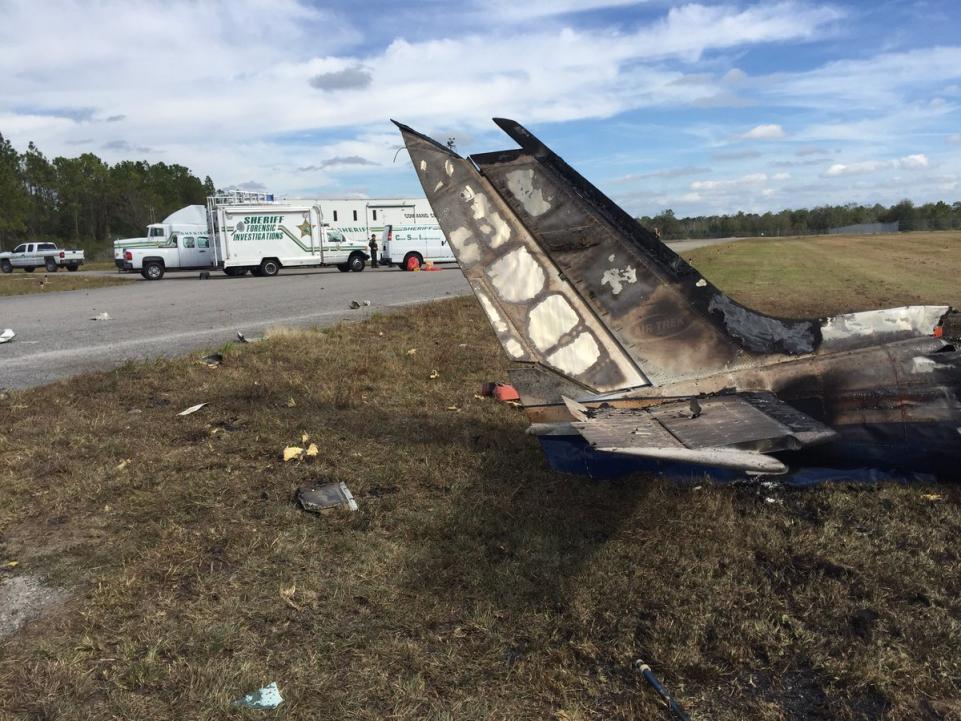We lost another Twin Cessna this weekend during the Christmas holidays. It went down on takeoff in Florida. The speculations have already started as to what happened and if you read the comments by people who fly, actual pilots and the general public you get the feeling general aviation is extremely dangerous. It is not.
So at the early stages being not only an initial and recurrent sim instructor with more than 2,000 hours in the type of plane that was in the accident, I try to start early by putting pieces together. Lets look at the facts as we know them.
First, it was a short flight and the person who was flying was my age. The airport was under instrument conditions and a flight plan, presumably an instrument flight plan, was filed. The plane evidently became airborne but did not stay airborne. There were five people on board. The aircraft was a Cessna 340. Fire consumed the aircraft after the lift off. So what could have happened?
Overload was speculated. Even thought the flight was just 45 minutes the pilot could have relied on the tip tanks alone to make the trip. That would have been a maximum of 600 pounds. If the aircraft had roughly 1,800 pounds of useful load then there was 1,200 pounds left. If the five passengers weighed 200 pounds each you still had 200 pounds left of useful load. The problem could have been that the pilot bought cheaper fuel where he departed and filled up the aircraft. He was headed for Key West, Florida and fuel is more expensive there so he could have thought about “tankering” fuel for the round trip. There still is chance that even if he filled up the basic aux tanks he still may have been under the useful load. The fire was all consuming so he may have had a lot of fuel on board.
The next thing I looked at being an attorney who has worked numerous aviation accident cases, is the way the plane went in. It looked like a flat impact with the gear up. I don’t have all the pictures but if the gear had been down we should have seen the gear being off early in the impact. There are not pictures of that as I write this article.
Now I will focus on what I think could have been one of the problem and that is the airport being “fogged” in which could lead to an ITO (instrument take off). I think this would be a known as it was definitely stated there was total fog. I not only teach ITO procedures but have accomplished them in my earlier life as a charter and corporate pilot. You have to know what to do and there is no room for error. It was evident that the aircraft left the tarmac after a lift off.
Now I will state not what I think happened but what I see in working with pilots on training in the sim, that being the failure to properly transition to the gauges to establish a climb on a low ceiling take off.
Again, I am not saying that is what happened but I make low ceilings take offs every year. I know that when you rotate after you establish your speed on the runway the next thing is to establish that climb and VERIFY that climb with the most underused instrument in the panel that being the vertical speed indicator. I have done it and I have seen it in the sim that being to rotate and to allow the plane to head back to level flight while scanning the instruments. This occurs before the plane is put onto the autopilot mode. When I give the initial sim review prior to working with a pilot I consistently see that they cannot keep the climb established after takeoff in IFR conditions. They also tend to concentrate on the artificial horizon and do not do a check of the vertical speed indicator.
There could have been several factors that lead to the loss of life and the loss of the aircraft. I own several aircraft and one of them is a Cessna 340. I have made it as capable as possible to be as safe as it can be with bigger engines, strakes, VG’s, and MT propellers. It will easily establish a 1200 fpm climb at sea level and almost as much at higher elevations. I also calculate my loads before take off and I know, because I teach this, that on one engine if you can’t fly the vertical speed at 200 fpm climb and stabilize the heading you will get in trouble.
Training is everything. It cannot solve some mechanical problems but I also work with pilots on maintaining their aircraft. The bottom line is practice, practice and practice. I work with our pilots on heavy loads and single engine work until they are sick at it. We try to set a standard pattern that becomes automatic. We also do instrument take offs and learn how to establish the climb.
If the Florida loss was due to failure to transition to the climb attitude then I just wished I could have flown with the pilot. I get a lot of “thank you’s” and “I did not know you could do that” when I teach in the sim. Life is short. Train and fly safe.
